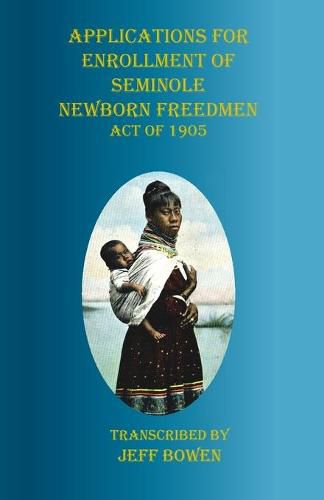Readings Newsletter
Become a Readings Member to make your shopping experience even easier.
Sign in or sign up for free!
You’re not far away from qualifying for FREE standard shipping within Australia
You’ve qualified for FREE standard shipping within Australia
The cart is loading…






This title is printed to order. This book may have been self-published. If so, we cannot guarantee the quality of the content. In the main most books will have gone through the editing process however some may not. We therefore suggest that you be aware of this before ordering this book. If in doubt check either the author or publisher’s details as we are unable to accept any returns unless they are faulty. Please contact us if you have any questions.
Seminole Freedmen, as they were called, were the only African Americans living among the Five Civilized Tribes who were entitled to tribal allotments. Unlike the other Five Civilized Tribes–which held African Americans as slaves–the Seminole incorporated blacks into their tribe. Since the Curtis Act required the Dawes Commission to follow tribal customs and usages in processing applications for allotment, it had to consider any children of a mixed marriage freedmen rather than citizens by blood … ; however, this did not prevent the newborn freedmen from sharing equally with full-bloods in the division of Seminole lands. Under this definition each Seminole newborn freedman was to receive forty acres of Indian Territory.
Applications for Enrollment of Seminole Newborn Freedmen, Act of 1905, have been transcribed from National Archive film M-1301, Roll 402. The applications found in M-1301 and transcribed in this series contain more information and establish family relationships not found on the census cards in National Archive film M-1186, the basis for the seminal title Final Rolls of Citizens and Freedmen of the Five Civilized Tribes in Indian Territory [and] Index to the Final Rolls. These transcriptions include all correspondence associated with successful Seminole claimants. Besides the names of all parents and newborns, the applications include the names of doctors, lawyers, midwives, and other Seminole relatives whose identities were divulged as part of the application process, and who attended to the Seminole before and during this time in history.
$9.00 standard shipping within Australia
FREE standard shipping within Australia for orders over $100.00
Express & International shipping calculated at checkout
This title is printed to order. This book may have been self-published. If so, we cannot guarantee the quality of the content. In the main most books will have gone through the editing process however some may not. We therefore suggest that you be aware of this before ordering this book. If in doubt check either the author or publisher’s details as we are unable to accept any returns unless they are faulty. Please contact us if you have any questions.
Seminole Freedmen, as they were called, were the only African Americans living among the Five Civilized Tribes who were entitled to tribal allotments. Unlike the other Five Civilized Tribes–which held African Americans as slaves–the Seminole incorporated blacks into their tribe. Since the Curtis Act required the Dawes Commission to follow tribal customs and usages in processing applications for allotment, it had to consider any children of a mixed marriage freedmen rather than citizens by blood … ; however, this did not prevent the newborn freedmen from sharing equally with full-bloods in the division of Seminole lands. Under this definition each Seminole newborn freedman was to receive forty acres of Indian Territory.
Applications for Enrollment of Seminole Newborn Freedmen, Act of 1905, have been transcribed from National Archive film M-1301, Roll 402. The applications found in M-1301 and transcribed in this series contain more information and establish family relationships not found on the census cards in National Archive film M-1186, the basis for the seminal title Final Rolls of Citizens and Freedmen of the Five Civilized Tribes in Indian Territory [and] Index to the Final Rolls. These transcriptions include all correspondence associated with successful Seminole claimants. Besides the names of all parents and newborns, the applications include the names of doctors, lawyers, midwives, and other Seminole relatives whose identities were divulged as part of the application process, and who attended to the Seminole before and during this time in history.